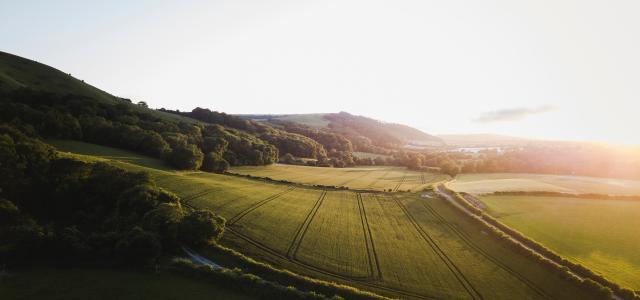
2020 is Finally in the Rear View Mirror!
2020 was a tough year. The reasons - you know them. Because of the uncertainty of the past year, I saw many people hit the pause button on their long term planning. Even as we deal with fresh lockdowns, I am personally optimistic that better times are ahead in many areas including medical, politics and the economy. I believe uncertainty is going to shift toward certainty and for that reason I believe now is the time for people to place their focus on the future which includes planning their finances. For that reason, you will see my communication to you stepped up in the coming months. My messaging through email and social media will be focused on helping people make great decisions around their financial position. As such, I am kicking off this year's initial newsletter by addressing the #1 problem that you will face in your retirement income planning.
What is the #1 Retirement Income Concern?
Ask most people over the age of fifty and they will tell you that having enough money to retire is their biggest financial concern. That concern is definitely real but very few people we meet realize all of the negative factors that work against them in retirement. If your concern is having enough income at retirement, then you should also be aware of the biggest risk to your income which is referred to as "Sequence of Return" risk. I find the best way to explain this risk is to use an example.
What is Sequence of Return Risk?
The sequence of annual investment returns of your portfolio matters greatly during retirement. Below are two hypothetical examples which illustrate how the sequence of investment returns can impact your portfolio during the accumulation phase leading up to retirement, and during the withdrawal phase once you enter retirement.

As the table above shows, all three scenarios have an average ten-year return of 7%. However, the sequence of the calendar year returns is different in each scenario. During the accumulation phase, the sequence of investment returns does not affect the end portfolio value.

Unlike the accumulation stage, the sequence of returns during the withdrawal phase significantly impacts the end value of the portfolio – and consequently the portfolio’s ability to provide you with long-term income. Look closely at scenario 2 and 3 above. The annual rates of return are the same, just in a different order yet the outcome of your portfolio varies by over $34,000! You have no control over rates of return in the future, you may want to be on the path of scenario 2 but could easily could end up on a the path of scenario 3. That is, if you don't get the rates of return in the right order, then you run the risk of running out of money sooner!
What Can You Do About It?
The key to protecting your portfolio (and your income) during the withdrawal phase is to organize a contingency plan for your withdrawals/income when markets are down. Sometimes referred to as a "Cash Wedge Strategy" or "Volatility Buffer", this is a strategy which insulates your income from market downturns. The strategy works as follows by dividing your retirement assets into 3 main categories:
- The Cash Wedge/Volatility Buffer: A portion of your projected retirement income – usually one year’s worth – is allocated to a conservative, highly accessible investment such as a money market fund. This portion of the portfolio creates a secure platform from which you begin drawing your retirement income.
- Short-Term/Conservative Investments: The second and third years’ projected retirement income is allocated into a low volatility short-term investment, such as a 1- and 2-year GIC, investment savings account, or bond fund. This creates a relatively stable part of the portfolio that may grow without taking on too much risk. In years two and three, these investments are used to replenish the Cash Wedge.
- Diversified Asset Mix: The remainder of the portfolio remains invested in the asset mix that suits your individual investment profile. This allows you to stay invested and participate in the market. Eventually any profits are moved from this part of the portfolio into the less volatile short-term investments and into the Cash Wedge position to create income for year four, and subsequent years.
Using the Cash Wedge Strategy helps minimize your retirement income risk. Because you are drawing income from the stability of the Cash Wedge, the rest of your portfolio is given time to overcome market swings. Over the long term, you have the potential to earn more from your portfolio and get the most out of your retirement income.
We offer a number of financial models to test your current strategies and how your future income can hold up against Sequence of Return Risk.

